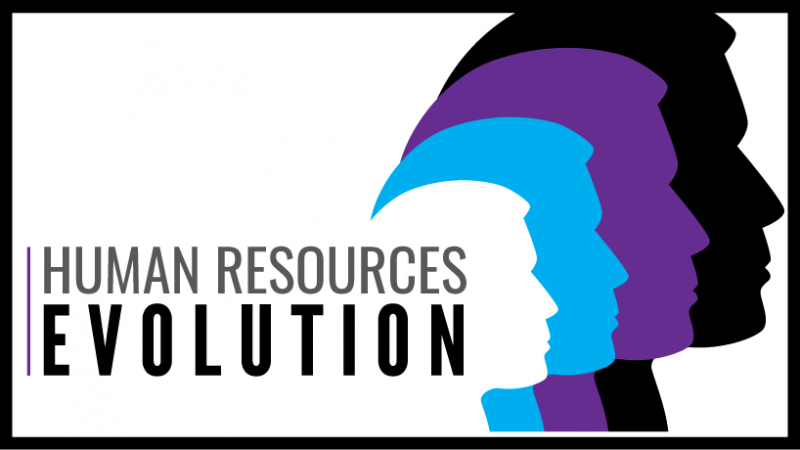Over the past century, there has been an evolution in the concept of “human resources” – a term that was not actually used in its current form until the mid-1950s when economist and Yale professor E. Wight Bakke published a report entitled “The Human Resources Function.” Changes in the culture, politics, and economics of society have influenced these shifts over time.
The early 20th century was a time of labor unrest during which employees were hired and fired at will, unions began to form (although participation in them was restricted), and strikes took place. As a result, the personnel department, essentially an “industrial relations” function, primarily focused on the issues of wages and labor disputes. In 1938, the Fair Labor Standards Act was created, setting the minimum wage and other laws to protect workers. As a result, the focus of the personnel department transitioned to compliance with these laws and to ensuring that employees were happy, healthy, and safe.
In the 1950s, when unions had become powerful, the human resource department was responsible for managing these unions; in addition, positions within companies were generally filled through internal promotion, rather than recruiting, with the HR department deciding who got which positions. As a result, according to social commentator William H. Whyte, who authored the book “Organization Man,” human resources was considered a “glamorous” role to be in, as it was one that wielded significant power and prestige. The scope of the department began to grow, and by the 1960s, it covered legal compliance, recruiting, hiring, training, and assessing workers.
When the economic recession hit in the 1980s, job seekers outnumbered available jobs, companies were forced to cut costs, and unions lost their grip on management. This led to cuts in labor relations, recruiting, and training, which, in turn, led to the development of shared-service models with call centers and outsourcing of administrative functions. A change from decades past, labor relations had lost its place as the main function of HR. Outsourcing led to the growth of staffing agencies and search firms, as well as IT-driven vendors providing administrative operation functions that were previously performed by employers. Computers were used more widely in HR, with the beginnings of automating procedures and the creation of web-based HR systems.
Heading into the 1990s, human resources began to be seen as a profession in its own right, evidenced by the growth of the Society for Human Resource Management’s membership from 4,000 in the mid-1970s to over 250,000 today. The shift from promoting from within to hiring from without impacted this, as HR staff were no longer focused only on their own businesses. In the late 1990s, a strong economy meant a surge in recruiting. In addition, during this time, spurred in part by the 1997 work of Dave Ulrich, a business professor at the University of Michigan who authored “Human Resource Champions: The Next Agenda for Adding Value and Delivering Results,” the concept of the human resources department began to transform. Ulrich proposed an HR function that would be responsible for a number of distinct categories: administrative efficiency through shared service centers that provided basic, traditional HR services and improvements to organizational processes (which could be outsourced); “centers of expertise” focused on compensation and benefits to attract employees and respond to employee needs as employee champions; strategic partners who focused on aligning HR with business strategy; and change agents who managed the processes that would increase the organization’s effectiveness.
In the 21st century – and trending into the future – major areas of change have included:
- The HR function has become aligned with the strategic plan of its organization as a strategic business partner that contributes and advises. Non-HR professionals are entering HR management as importance shifts toward inspirational leadership and business instincts rather than purely functional skills.
- Employees are seen as valued assets and organizational resources, and human capital management is recognized as a key driver of business success. HR leaders are expected to create demonstrable value for the company, achieving bottom-line results through recruiting, talent development, and retention.
- The concept of a “psychological contract” with employees – rewarding them for their loyalty with opportunities for advancement and job security – has been replaced by the concept of a “boundary-less career” as employee movement between organizations or functions has increased.
- Legacy HR processes are automated through shared service centers, economies of scale, standardizing output, and providing employees with a central interface for day-to-day administrative issues, which allows HR to focus on strategy. In a digital age, the workforce has become more mobile and demanding, and HR technologies must keep up with new tools and systems for recruitment, performance management, learning, wellness, feedback, and engagement.
- New challenges exist for HR with the globalization of the workforce, and inclusion and diversity continue to gain critical importance in every aspect of HR’s role.
- There is now an increased focus on human behavior – motivating, managing, and changing it – as psychology, sociology, and economics come into play in HR.
- HR is responsible for serving as an expert on organizational design and for maintaining organizational culture, leveraging means of seeking constant, continuous feedback on the organization’s culture and how to improve it; in addition, HR is ensuring that the organization’s values are evidenced in the work environment and employee behavior. Analytics and data are utilized to help understand how to improve the work environment, culture, and performance, and reduce risk, fraud, and compliance violations.
- Vendors are having a hand in setting HR agendas thorough creating “buzz” around issues.
- The concept of the “employee experience” is ubiquitous. Employees are now “driving the bus” on their careers – in recruitment, performance management, training, and promotions. As learning and development activities grow, employees now expect this as an HR benefit.
- Line managers are becoming involved in HR activities, with increased access to HR information and empowerment to develop and direct their employees, using HR as a resource.
- With mergers and acquisitions on the rise, centers of excellence are being created within combined HR departments to provide expertise in different areas, serving as a resource to one another. In addition, HR representatives are now assigned to different business units for personal, focused service to best meet needs.


